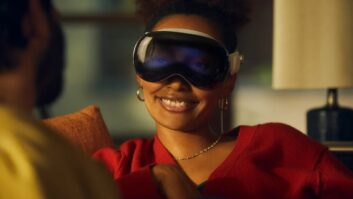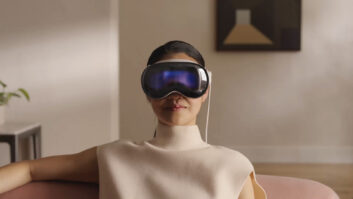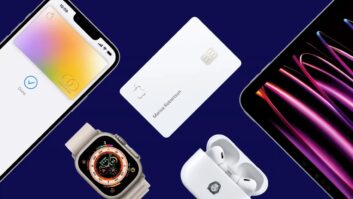San Francisco — Apple today started selling new iMac desktop computers equipped with Intel Core Duo dual-core processors, a full six months ahead of schedule.
The somewhat surprising announcement was made this morning by Steve Jobs at an unusually muted MacWorld keynote address at the Moscone Center.
Jobs also announced the first Intel-equipped Apple notebooks, MacBook Pro, also equipped with the Core Duo processors, will go on sale sometime next month. All of Apple’s computing products will switch over to the Intel Core Duo chip by the end of this year.
Together with the new Intel Macs, Jobs announced that Apple generated $5.7 billion in revenue in the fourth quarter, a billion dollars alone from Apple’s 135 retail sales. The company is now selling more than a million Macs a month, according to Jobs.
Perhaps more surprising than what Jobs, dressed in his usual black turtleneck and blue jeans, announced to the exuberant audience of Apple acolytes was what he did not announce, such as no new iPods. Also lacking was the star power that has become a regular feature of the Apple chairman’s annual address to the faithful.
One bit of showbiz was the appearance of Intel president/CEO Paul Otellini, who emerged from a plume of steam dressed in a clean room bunny suit and carrying a disc of chips. “I want to report,” Otellini said to Jobs, “that Intel is ready!”
The new Intel iMacs, which combine the processor and the display in a single unit, will offer the same features and pricing as the current PowerPC-enabled iMacs — $1,299 for the 1.83 GHz model with a 17-inch screen and $1,699 for a 20-inch, 2 GHz version — but will run two to three times faster using the dual core Intel chip.
Then, with his famous “oh, one more thing,” Jobs announced the new Intel MacBook Pro Intel laptops. According to Jobs, the 1-inch-thick titanium-cased notebooks will run four to five times faster than the current fastest Apple notebooks. Apple is starting to take orders now on two models, both equipped with 15.4-inch widescreen displays and an iSight Web camera for on-the-go video conferencing: a 1.67 GHz Core Duo model ($1,999) and a 1.83 GHz version ($2,499).
Jobs demonstrated the capabilities of the new laptop by holding an iSight video conferencing conversation with an Apple employee in the audience. “These things are screamers,” Jobs said.
All MacBook Pro notebook PCs will be equipped with Apple’s new patent-pending MagSafe power connector. Held in place by a magnet instead of a clip, the connector will disengage when yanked or tripped over, keeping the laptop from being dragged off a table top. “This saves you having your notebook fixed and saves us from having to fix them,” quipped Jobs.
New television ads to support the Intel-equipped Macs were premiered. Over scenes of bunny-suit-clad workers in a chip stamping facility, Keifer Sutherland emphasized the zeitgeist differences between Apple and Windows PCs, even though both now use Intel chips: “The Intel chip. For years it’s been trapped inside PCs, trapped in dull little boxes performing dull little tasks, when it could have been doing so much more. Starting today the Intel chip will be set free and live life inside a Mac. Imagine the possibilities.”
Since Apple did not notify its software developers, no new Intel-native software will be available for a few months. However, Jobs announced an Intel-native version of iLife ’06, an update of Apple’s popular package of programs that includes iPhoto, iDVD, iMovie, GarageBand, iTunes and, new this year, iWeb, new automated Web site creation software, as well as an Intel-native version of iWorks ’06.
iLife ’06, iWorks ’06 and future Macintosh programs will be available in “universal” versions that will run on both the new Intel and legacy PowerPC models. Both software suites go on sale today at $79 for single use and at $99 for “family packs” that can be used by up to five people, and will be bundled free with all new Intel-powered Macs.
As a bridge to updated Intel native software, Apple will include its Rosetta software, which enables the new Intel-equipped Macs to run legacy Mac software such as Microsoft Office. Jobs introduced Roz Ho, general manager of Microsoft’s Macintosh Business Unit, who announced that Intel native versions of Microsoft Office would be available “soon,” and that current versions of Office for Mac would be offered at half price to purchasers of the new Intel Macs.
Ho also announced that Microsoft had signed an agreement with Apple committing Microsoft to provide updates to Office for the next five years.
Jobs also announced an update of its Tiger software, v10.4.4, which also will run native on Intel Macs as well as on legacy PowerPC Macs.
Even though no new iPods were unveiled, Jobs noted that the company had sold 14 million of its music players in the just completed fourth quarter, bringing the total number of iPods sold to 42 million. Jobs also reported that 850 million tracks had been purchased from its iTunes online music store, which according to Jobs represents 83 percent market share, with downloads reaching a rate of three million a day.
Instead of a new player, Jobs announced a new combination remote control and FM tuner accessory ($49) for the video-capable iPod and the nano, addressing a long-missing omission.
Jobs also announced new car iPod integration would be available in more than 3 million Chrysler, Dodge and Jeep vehicles, and that 40 percent of all cars sold in 2006 would include some sort of iPod connectivity option.
Instead of new iPod hardware, Jobs announced new video content, such a raft of clips from Saturday Night Live clips that include famous routines dating back to the first season and the original cast. Jobs also noted that the 15-minute condensed version of the Rose Bowl was the top video download. Since launching video downloads on October 12, 8 million videos have been bought and downloaded.
Contrary to published rumors, Jobs did not announce a second generation A/V-enabled MiniMac that would have challenged the Windows Media Center PC platform.













